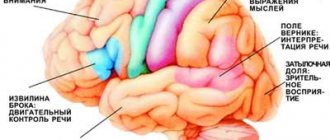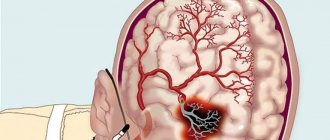Vegetovascular dystonia (VSD) is a syndrome that can be caused by the characteristics of the patient’s body or provoked by various external and internal factors. VSD often worsens in the fall. Attacks that occur every day exhaust a person and disrupt the quality of life. Drug therapy for exacerbation of VSD is often ineffective.
Doctors at the Yusupov Hospital provide preventive treatment for patients suffering from vegetative-vascular dystonia. Neurologists, endocrinologists, therapists, and gastroenterologists collectively decide on the patient’s examination regimen. Severe cases of vegetative-vascular dystonia are discussed at a meeting of the Expert Council, in which candidates and doctors of medical sciences take part. The medical staff is attentive to the wishes of patients and takes into account their emotional background.
Causes of vascular headache development
Vegetative-vascular dystonia is an outdated name for autonomic dysfunction of the cardiovascular system. VSD is characterized by more than 150 symptoms, the most common of which is vascular headache.
The causes of headaches are:
- decreased tone of the blood vessels supplying the brain, which causes hypoxia (usually occurs with a systematic increase in pressure, which stretches the walls of blood vessels),
- pressure on nerve bundles specifically at the moment of a pressure surge (expansion of the walls of blood vessels),
- venous congestion and cerebral edema,
- arterial spasm.
Complications
The most common complication of VSD is vegetative crisis. This is a sudden attack during which a massive disruption of the autonomic nervous system occurs. Depending on the type of violation, there are three types of crises.
- Sympathoadrenal. Accompanied by a massive release of adrenaline into the blood, an increase in blood pressure, pulse and body temperature. The skin turns pale, hands and feet become cold and numb. The person experiences severe chills, unexplained anxiety, and fear of death. The condition is also often called a panic attack.
- Vagoinsular. The patient feels hot and suffocated, his face turns red, and severe sweating appears. Blood pressure decreases, pulse becomes rare. Often the condition is accompanied by frequent loose stools.
- Mixed. The crisis manifests itself with mixed symptoms.
If the symptoms of VSD are ignored for a long time and there is no treatment, the pathology can cause the development of:
- persistent arterial hypertension, poorly corrected by medications;
- cardiomyopathy;
- diabetes mellitus type 2;
- cholelithiasis or urolithiasis;
- stroke;
- myocardial infarction.
Excessive excitability of the autonomic nervous system also causes a decrease in immunity.
Symptoms of headache with vegetative-vascular dystonia
The symptoms of vascular headaches are very diverse, but the main difference from other types of pain is less intensity, rather “background” pain, but painful attacks, for example, migraines, can also occur.
- Headache with VSD accompanies a person constantly with varying intensity. She goes away during sleep, but returns within the first minutes after waking up. Due to the “background” course of pain, it often begins to be perceived as a normal condition. But if you ask such a patient if he has a headache, he will always answer “yes.”
- The pain with VSD is “dull.” It can be squeezing, bursting, pulsating, etc. Its intensity is low (except for attacks, which are also “dull”, although strong), therefore, if the patient complains of acute pain, this most likely will not be VSD.
- A constant headache slightly disrupts the perception of reality: sounds may seem muffled, the movements of the surrounding world are inhibited and excessively smooth. This condition can be dangerous for a person, as he may inadequately assess the situation and, for example, get hit by a car.
- Vascular headache is often accompanied by other vegetative manifestations and neurological conditions: dizziness, unsteadiness of gait and difficulties with balance and coordination of movements, fainting, drowsiness, weakness, nausea, tinnitus, “stars” before the eyes, increased sweating (especially of the palms).
- The pain may intensify when bending over, which once again proves its vascular origin.
- The localization can be absolutely any: the entire head, one half of the head, a “hoop” at the level of the forehead, only the forehead/temples/back of the head/vertex/eye sockets, with irradiation to the ear or neck.
- The nature of the pain is usually aching, squeezing or, conversely, bursting, often pulsating (not necessarily in time with the heartbeat).
- Painkillers are usually ineffective for vascular pain. In some cases, antispasmodics help.
Often, exacerbations of headaches occur during periods of intense and prolonged mental activity, strong emotional stress, physical overload, weather and climate changes, etc. Read more about the causes and symptoms of VSD here.
Symptoms
The symptoms of vegetative-vascular dystonia are varied, since the ANS is responsible for the functioning of all organs and structures of the human body. All manifestations of the disease can be divided into several groups:
- respiratory (respiratory): rapid breathing, subjective feeling of lack of air, inability to take a deep breath, aggravated by stress;
- cardiac (cardiac): frequent or rare pulse, interruptions (feeling of freezing) in the work of the heart, pain and a feeling of squeezing in the sternum or in the left half of the chest;
- thermoregulatory: an increase in temperature not associated with any infectious disease or inflammatory process; usually goes away on its own;
- dysdynamic: a sharp increase or decrease in blood pressure, accompanied by corresponding symptoms: headache, dizziness, flashing spots before the eyes, fainting, etc.;
- psychoneurological: increased sensitivity to changes in atmospheric pressure and temperature (meteosensitivity), drowsiness during the day and insomnia at night, apathy, irritability, causeless anxiety, fatigue;
- gastrointestinal: constipation, diarrhea or their alternation, pain and heaviness in the stomach, heartburn, increased gas formation in the intestines;
- sexual: decreased sexual desire, lack of arousal, inability to achieve orgasm, impotence in men.
The disease can cause both individual symptoms and various combinations of them. This makes it much more difficult to diagnose.
Diagnosis of headache due to VSD
A headache can occur in many cases and for various reasons, so it is very important to carry out a differential diagnosis of vascular headache:
- magnetic resonance or computed tomography (to exclude tumors, stroke, vascular malformation, consequences of traumatic brain injury, etc.), electroencephalography,
- X-ray of the head and cervical spine (to exclude sinusitis, skull injuries, displacement of the cervical vertebrae),
- vascular doppler,
- neurological examination (palpation of the neck and shoulder girdle, neurological tests),
- blood tests.
If you suffer from frequent headaches, you need to visit a neurologist who will prescribe the necessary tests and select adequate treatment.
Diagnostics
Diagnosis of vegetative-vascular dystonia requires, first of all, the exclusion of another, more serious pathology with similar symptoms. The examination includes:
- interviewing the patient, collecting anamnesis to identify specific complaints, their strength, circumstances of occurrence, etc.; hereditary factors and previous diseases are also taken into account;
- examination: breathing and pulse rates are checked, an orthostatic test is performed (measurement of the heart rate first while lying down, and then 1-2 minutes after moving to a vertical position), dermographism is assessed (the color of the strip on the skin after holding the handle of a neurological hammer, indicating the activity of the or another part of the autonomic nervous system);
- laboratory diagnostics: general and biochemical blood tests, assessment of hormone levels, indicators of inflammation and autoimmune processes);
- ECG and ultrasound of the heart to exclude cardiac pathology;
- chest X-ray and respiratory function testing (spirometry), to exclude diseases of the respiratory system;
- rheoencephalography: assessment of the tone of cerebral vessels, the elasticity of their walls;
- Doppler ultrasound of the vessels of the neck and brain to assess the quality of blood flow in them;
- X-ray of the sella turcica, MRI of the brain to exclude tumors and other pathologies;
- electroencephalography (EEG): evaluates bioelectrical impulses in the brain and helps exclude epilepsy.
The patient must be examined by a therapist, neurologist and cardiologist. If necessary, consultations with other specialists are added, for example, a gynecologist, gastroenterologist, endocrinologist, psychiatrist.
Make an appointment
Treatment of vascular headache and prevention of VSD
There is no actual treatment for vascular headache, i.e. It is extremely difficult to stop an attack of pain. Therapeutic measures are aimed at increasing vascular tone, restoring normal blood circulation to the brain and improving the functioning of the cardiovascular system. Read more about the treatment of vegetative-vascular dystonia and specifically headaches at the Aximed neurology clinic “here”.
In addition to drug treatment for people suffering from headaches and other symptoms of VSD, Aximed neurologists recommend:
- eliminate stressful situations from your life as much as possible (change jobs, undergo a course of family psychotherapy, etc.),
- maintain a sleep/wake and work/rest schedule,
- stop smoking (this constricts blood vessels and weakens the elasticity of the walls),
- eat a complete and balanced diet,
- Jogging is highly recommended, since in the process the brain is actively saturated with oxygen (which may be lacking due to reduced blood supply to the brain),
- massages (especially the collar area).
Are you plagued by headaches? Consult a neurologist. Vegetative-vascular dystonia can be treated, but the more advanced the case, the longer it will take, and the more likely it is that the pain will return again. Do not delay treatment, because life without pain is much more pleasant.
general information
The term “vegetative-vascular dystonia” is currently not included in the International Classification of Diseases. Instead, the diagnosis “somatoform autonomic dysfunction of the nervous system” is used. In addition, a number of individual manifestations are classified as independent diseases. In our country, the old terminology is more often used.
The autonomic nervous system (ANS) is responsible for regulating the basic processes occurring inside the human body. Vital functions are under its control:
- breath;
- heart rate;
- tone of blood vessels and hollow organs;
- secretion of saliva, sweat, hormones;
- digestion of food;
- liver and kidney function, etc.
A person cannot control the functioning of the autonomic nervous system, which is why it is also called the autonomic nervous system. The functioning of various departments is regulated by a complex feedback system and also depends on the level of hormones. Failures in this mechanism lead to disruptions in the functioning of internal organs.
Make an appointment
Treatment options
Vegetative-vascular dystonia requires an individual approach to the selection of modern diagnostics and a set of therapeutic measures. When choosing methods for treating VSD, the therapist takes into account the form of the disease, the frequency of attacks, the age of the patient, and the presence of additional pathologies. According to healthcare policy, a citizen independently addresses questions of interest to a medical institution under a compulsory medical insurance policy or for paid services; information about them and contacts of specialists are on the clinics’ websites.
The treatment described in many educational articles is aimed at eliminating the signals of the disorder and influencing the causes of its occurrence. Of no small importance in VSD is the improvement of the patient’s psycho-emotional state. Periodic nervous overstrain and stress do not improve the condition.
Vascular dystonia requires an integrated approach to therapy. For the treatment of VSD, sufficient measures are:
- taking medications;
- normalization of lifestyle;
- spa treatment (beneficial for general health);
- psychotherapy.
Treatment of vegetative-vascular dystonia is indicated using manual therapy. Proper treatment of the spine helps to normalize work capacity. The spinal cord contains autonomic centers that are affected during the development of spinal diseases.
It is important to treat protrusions, scoliosis, intervertebral hernias, spondylosis, and osteochondrosis. If you make an appointment with a doctor at the initial stage of the disease, you will be able to completely eliminate the causes of VSD.
Drug therapy
Treatment of VSD in patients is carried out by taking medications; they are prescribed by a neurologist after an in-depth diagnosis. He selects the course of drugs on an individual basis (taking into account tolerability and the presence of side effects). For the treatment of vegetative-vascular dystonia, the following medications are prescribed:
- Antidepressants (sedatives) – provide a reduction in increased anxiety and severe irritability. By taking such drugs, it is possible to relieve constant pain in the heart and muscles.
- Tranquilizers - medications reduce the likelihood of panic attacks and unreasonable fears.
- Sedatives - herbal remedies; if they do not help, the most serious drugs are used.
- Nootropic drugs – stimulate blood circulation in the vessels of the brain, eliminate the negative effects of hypoxia, and have a positive effect on the body’s resistance to stress.
- Adrenergic blockers - used to eliminate disruptions in the heart rhythm.
- Diuretics – used for headaches and dizziness associated with high intracranial pressure and hypertension. They have the ability to remove fluid from the body. Diuretics reduce the level of vitamins and microelements.
- B vitamins normalize the conduction of nerve impulses during VSD. They improve the activity of the central nervous system.
- Metabolic agents - help control glucose parameters during sympathetic VSD. They are characterized by antihypoxic and microcircular characteristics.
Lifestyle change
To improve the functioning of the autonomic system, people with this diagnosis should make adjustments to their lifestyle and habits. With the development of vegetative-vascular dystonia, special therapy involves a combination of the following rules:
- Normalize your work and rest schedule, take a contrast shower, relaxing baths, do therapeutic massage, and introduce sports into the practice. To get rid of dystonia, during the working day they do gymnastics, take breaks from work, and take a walk. This helps normalize blood circulation and relax, restore immunity.
- Get enough sleep every day, you need to sleep at least 8 hours.
- You should take a walk in the fresh air every day. The walk lasts at least 1 hour. This has a good effect on the functioning of the whole body.
- Lead a sporty lifestyle. Physical activity is not intense, but moderate.
- Diet restrictions. Foods containing a lot of trans fats are removed from the diet. These substances lead to the appearance of atherosclerotic plaques and increase nervous excitability. You cannot follow strict diets. They negatively affect the psycho-emotional state.
Nutrition
When disorders develop, the diet should be compiled taking into account the principles:
- Eat plenty of foods containing beneficial microelements. They have a beneficial effect on the functioning of the heart and blood vessels, and normalize blood pressure parameters.
- Drink at least 1.5 liters of clean water per day. This will help to significantly normalize the water-salt balance.
- Enjoy food.
- Bring your diet closer to the requirements of a healthy diet.
Features of the diet differ depending on the type of pathology. If a person suffers from hypertension, foods containing a lot of salt should be excluded from the diet. It is important to give up fast food, canned food, and marinades. It is useful to eat soups with vegetable or fish broth. A substitute for wheat bread is baking made from whole grain flour.
With the hypotonic type of the disease, the menu contains vegetables, fruits containing vitamin C, and carotene. It is beneficial to eat foods that help raise blood pressure. Vegetative-vascular dystonia requires the use of foods:
- citrus fruit;
- nuts;
- cheeses;
- black chocolate;
- coffee;
- cocoa;
- bananas.
Cardiac vegetative-vascular type of dystonia involves consuming large amounts of foods containing vitamins. This has a beneficial effect on the functioning of the heart, and there is a decrease in the risk of negative health consequences, which eliminates the need to consult a cardiologist. The diet includes:
- oatmeal;
- buckwheat;
- eggs;
- onion;
- eggplant;
- apricots;
- peaches;
- grape;
- legumes;
- lean types of meat and fish.
Psychotherapy
The disorder requires psychotherapeutic help. Effective treatment helps to target the causes. This allows you to get rid of indicators of vegetative-vascular dystonia. In some cases, consultation with a psychiatrist is required.
Spa treatment
An annual holiday in a sanatorium improves your physical and psycho-emotional state. Thanks to this, it is possible to prolong the state of remission. Traveling abroad is not necessary. You can choose a balneological resort in a comfortable climate zone.
Treatment at the Energy of Health clinic
Doctors at the Health Energy clinic choose an integrated approach to the treatment of vegetative-vascular dystonia. After a thorough diagnosis and exclusion of other pathologies, combination therapy will be prescribed, including:
- modern medications if necessary (the choice depends on the severity of symptoms);
- physiotherapy, massage and physical therapy to strengthen the body in general and the nervous system in particular;
- acupuncture, manual therapy if indicated.
We will certainly discuss your lifestyle, tell you about ways to correct it, and help you create the right diet. Regular monitoring by our doctors will help keep the disease under control.
Treatment
Some patients with tension headaches do not see a doctor and try to treat the pain on their own. Unfortunately, repeated self-use of painkillers can itself cause severe headaches.
Drug treatment
There are a wide variety of medications, including over-the-counter ones, that can help relieve pain, including:
- Painkillers. Simple over-the-counter pain relievers are usually the first line of treatment for headaches. These include aspirin, ibuprofen (Advil, Motrin IB, others), and naproxen (Aleve). Prescription medications include naproxen (Naprosyn), indomethacin (Indocin), and ketorolac (ketorolac tromethamine).
- Combined drugs. Aspirin or acetaminophen or both, often combined with caffeine or a sedative in one medicine. Combination medications may be more effective than medications with a single active ingredient.
- Triptans and drugs. For people who have both migraines and tension-type headaches, triptans can provide effective headache relief. Opiates, or narcotics, are rarely used due to their side effects and high risk of addiction.










